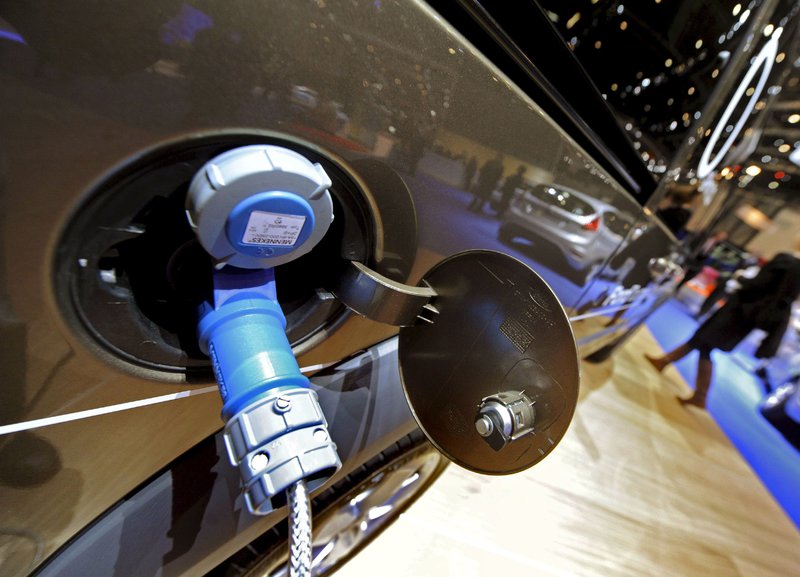An intelligent alternative
Electric vehicles are the only viable substitute for conventional engines, as questions are raised in the wake of the such incidents as the recent VW ‘dieselgate' scandal
The electric future we have heard so much about is finally here, albeit not entirely. Thanks to recent events in the sector, such as the Volkswagen engine tampering scandal that has become known as ‘dieselgate', what has for a number of years been a mere eccentricity, ownership of electric vehicles is now a growing trend.
In this country, however, it is a trend that is progressing at a snail's pace. According to figures from the Catalan energy institute, ICAEN, until September this year only 513 electric cars were registered in Catalonia and 1,143 hybrid vehicles. Yet, it is still an increase on 2014 and 2013, when 425 and 184 electric vehicles were registered, respectively.
The, gradual, upward trend in electric cars can be clearly seen from the figures, although at the same time they do not provide enough reasons to be overly optimistic: “We are below the levels in other European countries and so we need to keep working to incentivise it,” says Mercè Rius, the director of ICAEN.
According to the statistics, only four out of every 1,000 vehicles registered in Catalonia are electric, and there are currently a total of around 4,000 such cars in the country, of which only 1,044 are private vehicles (the rest are either two-wheeled vehicles or service vehicles). What's more, of these 4,000, some 3,300 are all in the greater Barcelona area only.
In some other countries, such as Norway, one out of every three vehicles is electric, while the ratio for the majority of European countries is somewhere between seven and 38 out of every thousand, which even at the low end is higher than here: “We have not fulfilled our expectations, but then they have not been fulfilled anywhere,” says Rius, who attributes the slow pace of progress to a combination of factors, from the economic crisis to an insufficient support infrastructure.
Catalonia currently has 1,000 individual charging stations and 720 simultaneous stations (of which 650 are in the Barcelona area). However, new fast-charging stations are planned in 2016 for Badalona, Montcada i Reixac, Barberà del Vallès, Sant Cugat del Vallès, Pallejà, Sant Joan Despí, Gavà and l'Hospitalet de Llobregat.
“Renewable energy in transport can only grow,” says Josep Julià, professor at the Eada Business School. “In a few years, we will see the same progress we saw with diesel, 10 or 15 years ago,” he adds.
What is true is that manufacturers of both cars and components are working to make batteries that are lighter and longer-lasting, as well as better performing car engines that can go further on a single charge.
All manufacturers are working on electric vehicles, says Julià, “so as not to lose traction or to avoid being overtaken by competitors.” The professor picks out Japanese car maker Nissan, whose Leaf model can go 250 kilometres on one charge and has become a sales success, while the company's e-NV200 van is also selling well. On the other hand, Volkswagen announced in September the launch of a range of 20 electric and hybrid vehicles in five years' time, while the German company's subsidiary, Seat, has decided to keep its distance until the market has matured, according to a number of news reports.
In general, the sector continues to fund research and experts predict that advances in lithium batteries will provide the definitive revolution in the development of electric transport. This technology promises to provide cheaper batteries and allow vehicles to go up to 300 kilometres on a single charge.
“In four or five years there will be an explosion of electric vehicles,” says Ramon Caus, former karting racer and director of the Expoelèctric trade fair. “In 10 years, we will see significant changes,” he predicts. He also points out that, despite a lack of interest from some, in general the industry continues to work and research in this area.
“Electric vehicles are the vehicles of the future,” says Rius. “It is still a minority option for a number of reasons, not least the economic crisis, which has not helped at all,” but she also thinks that “when people stop looking only at the short term and look ahead and consider the medium to long term, electric vehicles will become a realistic option for them.”
Electric vehicles of all types
There are now a number of different types of electric vehicles available, from bikes and motorbikes to cars, vans, buses and even lorries. So-called BEVs (Battery Electric Vehicle) are vehicles that are driven exclusively by battery. Despite limited range on a single battery charge, they can be recharged in special stations or overnight at home. PHEVs (Plug-in Hybrid Electric Vehicle) are hybrid vehicles driven by a mix of batteries and petrol.
What types are there on the market?
Today, there are different types of vehicles on the market, with the majority being conventional petrol or diesel driven cars. The type A category refers to petrol and diesel vehicles with reduced consumption and emissions. At the same time there are BEV electric vehicles, HEV hybrid vehicles and PHEV plug-in hybrids, gas-fuelled vehicles (CNG), and liquefied petroleum gas (LPG) cars.

